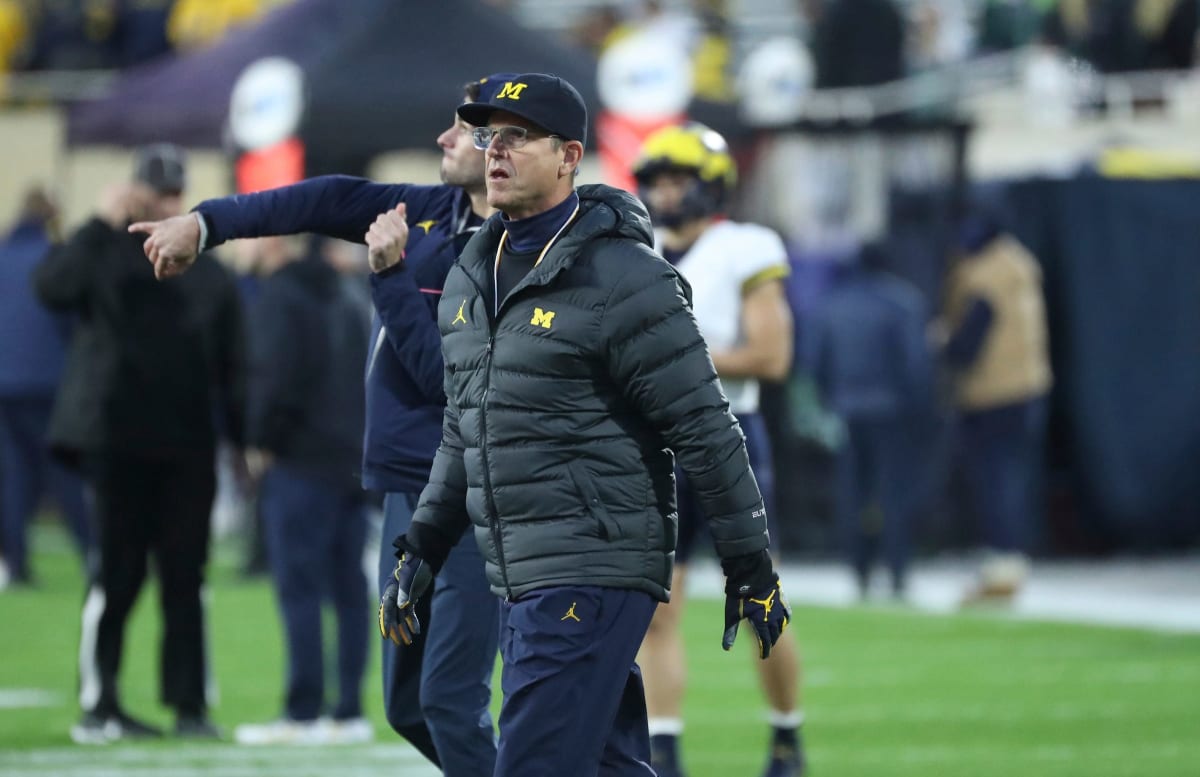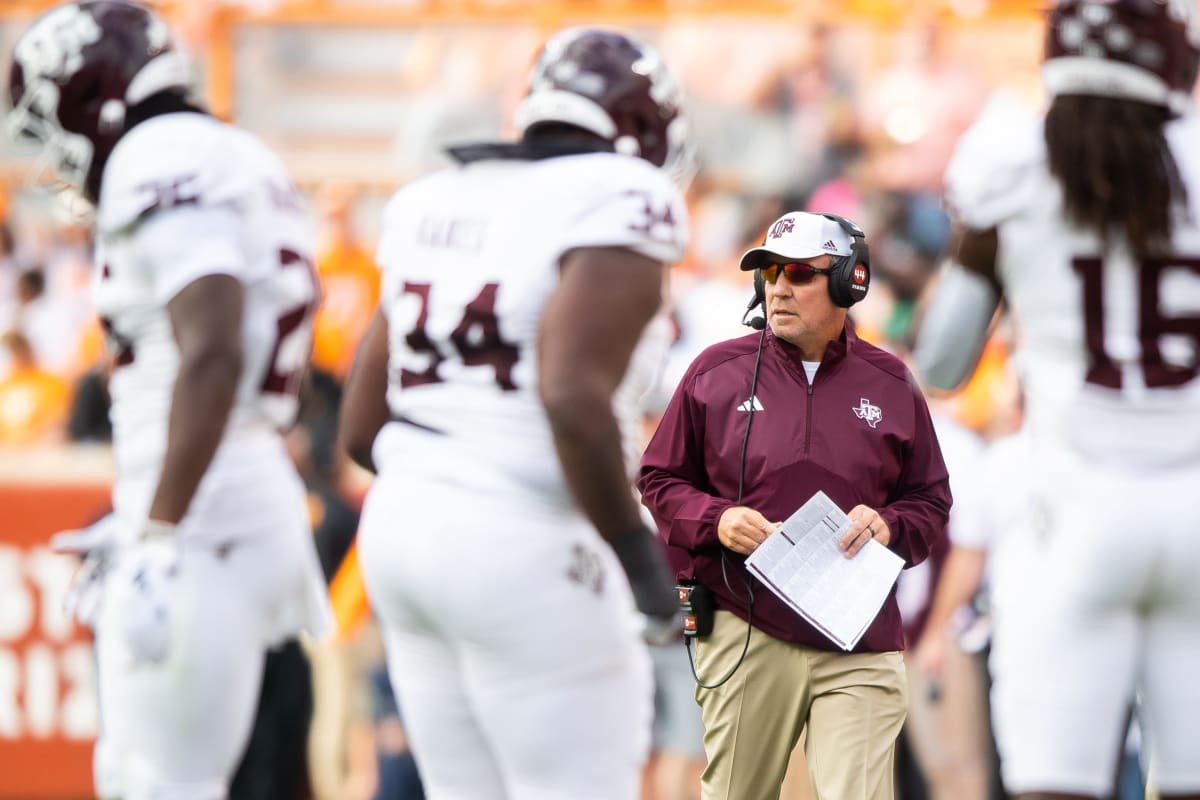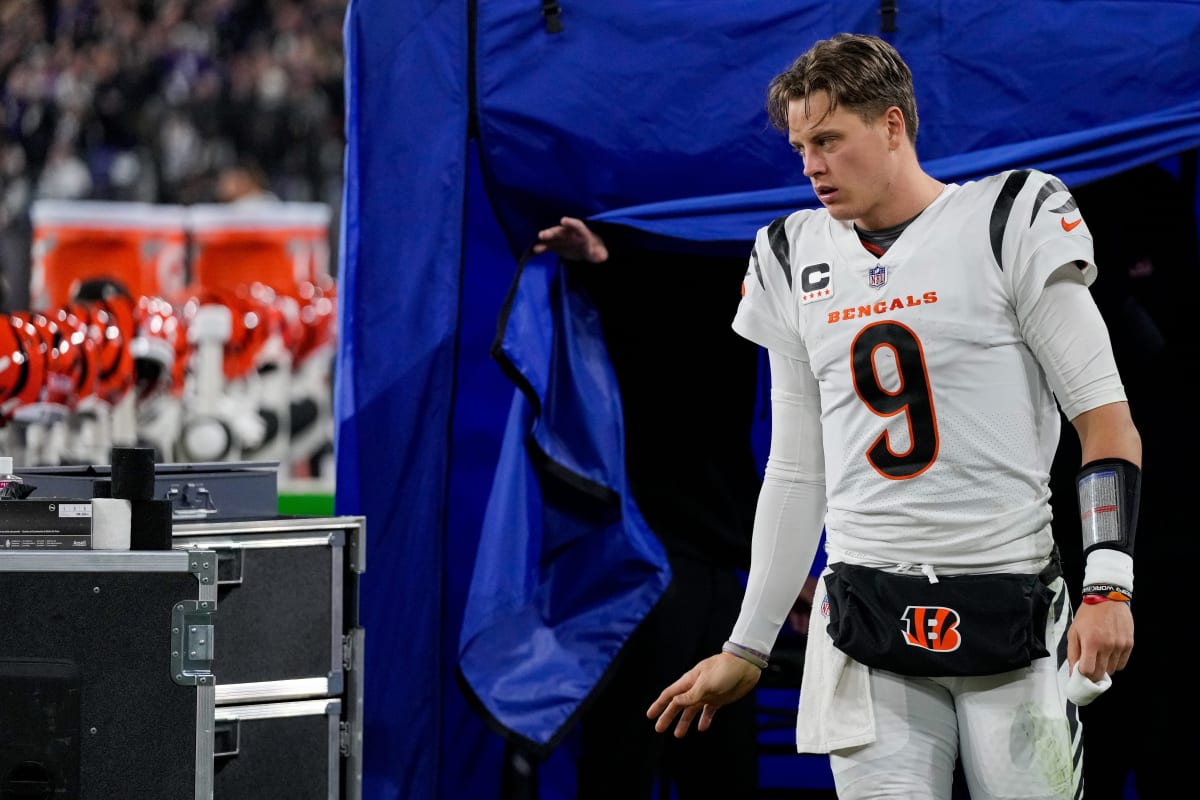Although this column, and The MMQB’s coverage, typically revolves around professional football, there have been some very “professional” situations going on at the highest levels of college football. College football is mirroring the NFL—even occasionally surpassing it financially—in some important ways. Let’s examine.
College commissioner power
The legal wrangling over the past two weeks between University of Michigan, along with football coach Jim Harbaugh, and the Big Ten Conference is very similar to the legal wrangling among the NFL and its teams, owners and players over the past 15 years. The issue involves an important tenet that is central to the business of the NFL: commissioner power.

Kirthmon F. Dozier/USA TODAY Network
Big Ten commissioner Tony Petitti disciplined Harbaugh with a suspension that will include the Wolverines’ last three regular-season games. Harbaugh and Michigan, after much indignation and a request for a temporary restraining order (TRO), ultimately chose to surrender and accept the three-game suspension.
Petitti’s power to suspend Harbaugh came from a loosely defined “sportsmanship” clause in the Big Ten bylaws. It, of course, brings to mind similar clauses involving catch-all phrases (such as “best interests,” “integrity of the game” and “conduct detrimental”) used by NFL commissioner Roger Goodell. The parallels are clear, especially to a case involving another Michigan man: Tom Brady.
As we know, Brady challenged Goodell’s discipline of a four-game suspension for deflated footballs in a long court battle, which the quarterback won at the district court level but lost on appeal in 2016. Goodell’s broad powers, although momentarily weakened by the district court, were emboldened by the 2nd Circuit Court of Appeals, which deferred to the wide discretion of a sports commissioner. The Brady case would certainly not have been good precedent for the Michigan-Harbaugh side (had the case proceeded in court), no matter the powerful legal horsepower amassed by Michigan. (It retained the powerful Washington, D.C., firm Williams & Connolly, named after former Washington owner Edward Bennett Williams.)
Ultimately, the issue was the same for Harbaugh as it was for Brady: the breadth and depth of commissioner power. And both Michigan men ultimately lost to that expansive power.
And, of course, besides Petitti, the real winner here was that undefeated opponent … billable hours.
College coaching contract power
In my 10 years in the NFL, I negotiated dozens of coaching contracts, including two for head coaches and one for a head coach–general manager. However, I have never seen a contract like the one for now fired Texas A&M coach Jimbo Fisher. Let the sink in: A contract for a college football coach is stronger than any contract I have seen for an NFL head coach.
Fisher was dismissed last week after signing a $95 million extension with the school just two short years ago. He will now be paid the $76 million still due on that contract as follows: $19.2 million in the next 60 days followed by eight annual payments of $7.2 million, payable through 2031. That is quite the retirement plan for Fisher, an annual annuity that puts Bobby Bonilla’s deferred payments at the children’s table.
And here’s the kicker. That is not even the most stunning part of the contract. It is the lack of offset.
Offset allows for reduction of the financial obligation of the team (or college) firing the coach due to subsequent earnings in coaching, broadcasting or—depending on the language of the contract—other “football-related employment.” With offset, there is also a “duty to mitigate,” requiring fired coaches to look for work and not just collect the firing team’s checks. Offset and the duty to mitigate are staples of NFL (and, I assume, most college) coaching contracts. Although … not here.

Brianna Paciorka/News Sentinel/USA TODAY Network
Fisher has no offset in his contract. He will collect his $76 million and, if he so desires, only add to that income with further coaching, broadcasting or whatever else he does to earn a paycheck. He can double-dip, triple-dip, quadruple-dip, etc., or he can—with no contractual obligation to mitigate—just do nothing.
The fact that Texas A&M gave him this contract, negotiated by veteran NFL agent Jimmy Sexton, tells us all we need to know about college football at the highest level. (I have also heard that Florida’s Billy Napier has no offset in his contract, as well as Kansas men’s basketball coach Bill Self.)
At the highest level of college football, the facilities, resources and owners (boosters) are similar. Yet the contracts, at least in certain cases, are better. It is pro football without the labor costs.
This summer I added a coaching category to my Business of Football Hall of Fame, inducting Matt Rhule. Now Fisher goes to the head of the line for immediate induction.
Speaking of strong contracts …
Watson and Burrow injuries and investments
Joe Burrow and Deshaun Watson will miss the rest of this season with wrist and shoulder injuries, respectively.
Burrow signed an extension before this season, bringing him under contract with the Bengals for seven seasons. Of those seven years, which total an impressive $275 million, the first three years and $146 million are guaranteed, with additional injury guarantees up to $219 million.

Sam Greene/USA TODAY Network
The wrist injury, however, will have no connection to the injury guarantees—those vest only if the player is unable to play due to an injury suffered before that season. Burrow’s injury guarantees are for 2026 and ’27; for him to activate those, the wrist injury would have to be career-ending, which it is not. I just wanted to clear up some misinformation about his injury and future years.
As for Watson, the injury ended his second year with the Browns. He played only five games in 2022 (due to suspension) and only six games in ’23 (due to injury).
I have said this often: Of all the players in NFL history, it is Watson—unwanted by his former team after facing allegations sexual harassment and assault by dozens of massage therapists—who garnered the best player contract ever given out. The five-year, fully secured $230 million is the only veteran NFL contract guaranteed for that length.
If there were any doubts about how important full guarantees are, those were confirmed this summer when NFL owners (whether through collusive practices or just individual owner unwillingness) refused that structure for elite quarterbacks such as, well, Jalen Hurts, Lamar Jackson, Justin Herbert and yes, Burrow. Those teams paid a lot of money but ultimately held their ground against the one nonnegotiable: full guarantees. The Watson contract continues to resonate as a true outlier in the business of football.
The investment into Watson, two years into a five-year contract, is now $92 million for 11 games, certainly not a solid part of the Browns’ portfolio.







